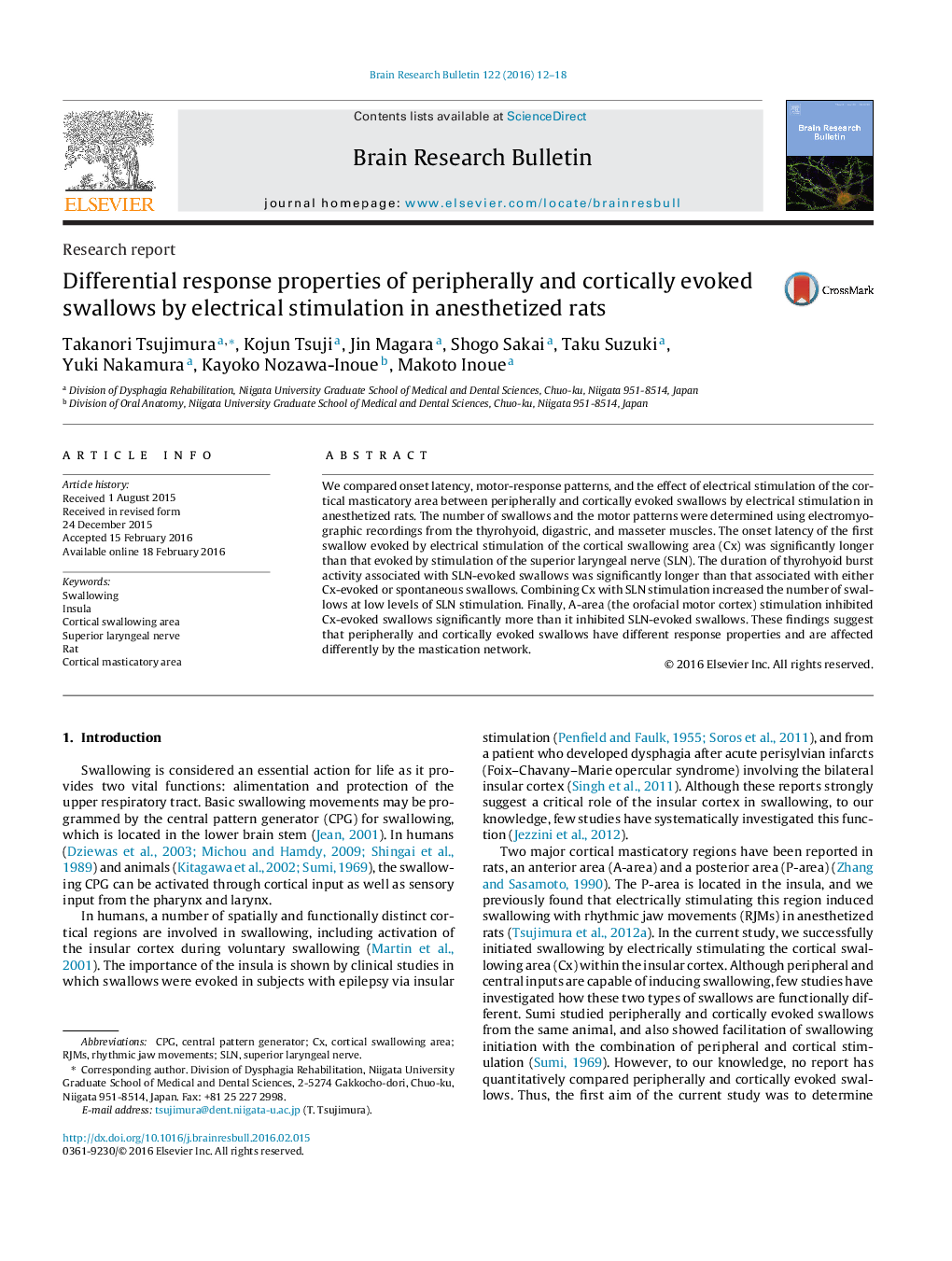| Article ID | Journal | Published Year | Pages | File Type |
|---|---|---|---|---|
| 6261664 | Brain Research Bulletin | 2016 | 7 Pages |
â¢We compared cortically and peripherally evoked swallows by electrical stimulation.â¢Cortically evoked swallows had longer latencies than peripherally evoked swallows.â¢Thyrohyoid burst duration was longer during peripherally evoked swallows.â¢A-area stimulation inhibited cortical swallows more than peripheral swallows.â¢Electrically evoked cortical and peripheral swallows have different properties.
We compared onset latency, motor-response patterns, and the effect of electrical stimulation of the cortical masticatory area between peripherally and cortically evoked swallows by electrical stimulation in anesthetized rats. The number of swallows and the motor patterns were determined using electromyographic recordings from the thyrohyoid, digastric, and masseter muscles. The onset latency of the first swallow evoked by electrical stimulation of the cortical swallowing area (Cx) was significantly longer than that evoked by stimulation of the superior laryngeal nerve (SLN). The duration of thyrohyoid burst activity associated with SLN-evoked swallows was significantly longer than that associated with either Cx-evoked or spontaneous swallows. Combining Cx with SLN stimulation increased the number of swallows at low levels of SLN stimulation. Finally, A-area (the orofacial motor cortex) stimulation inhibited Cx-evoked swallows significantly more than it inhibited SLN-evoked swallows. These findings suggest that peripherally and cortically evoked swallows have different response properties and are affected differently by the mastication network.
